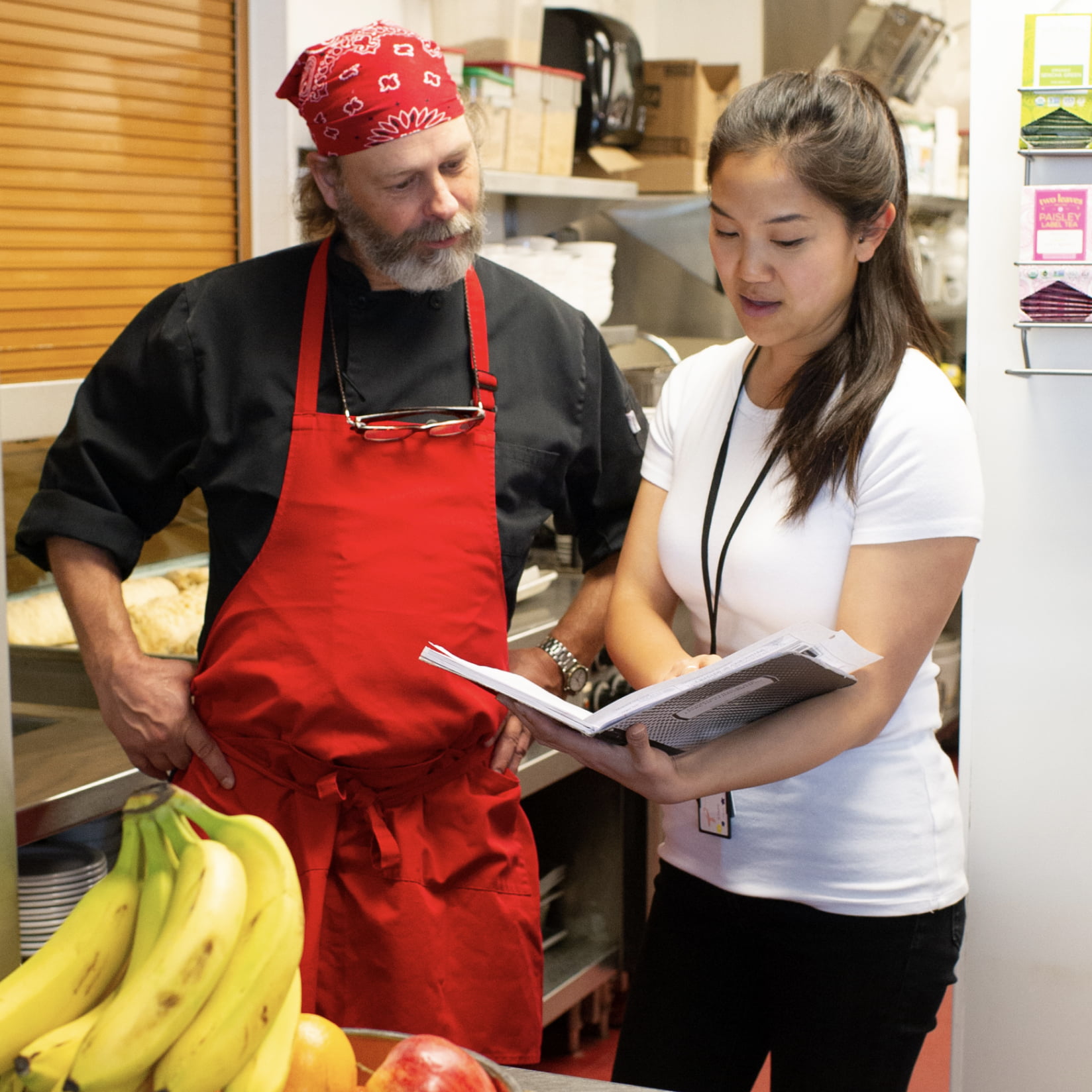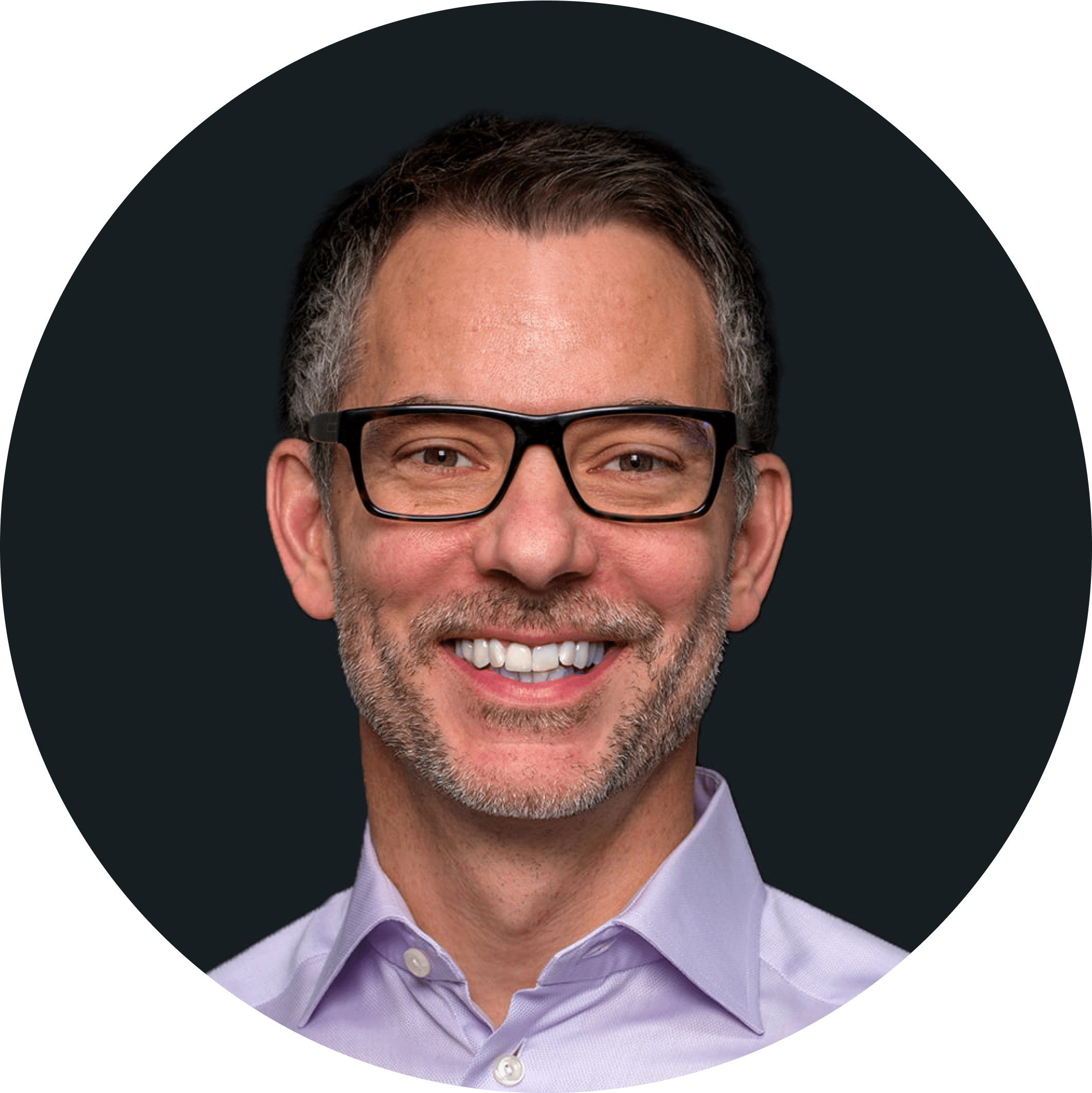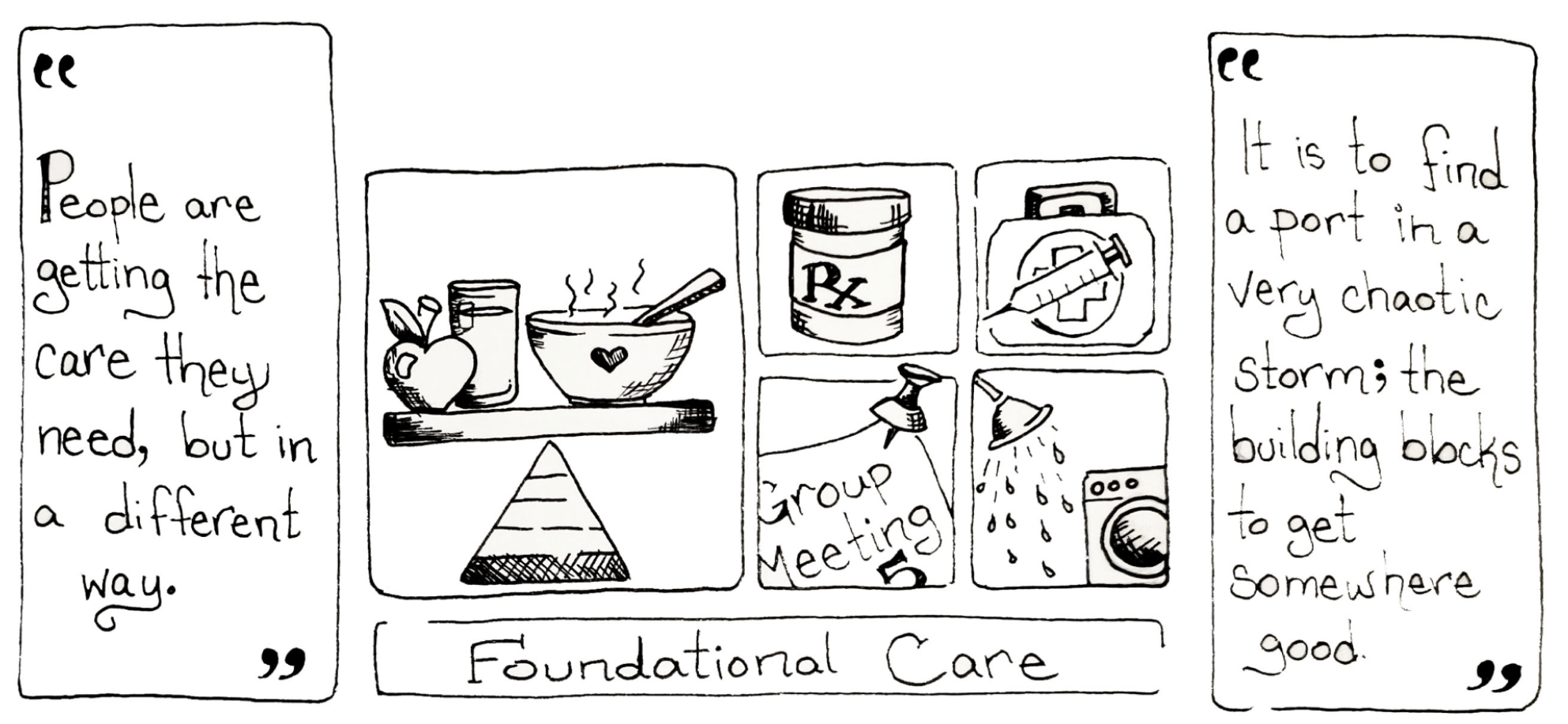Anyone who walks through the doors of the Dr Peter Centre knows that it’s a special place. One of the world’s most recognized HIV/AIDS care facilities, the Centre provides critical care to underserved populations in innovative and effective ways. Leaders in their field, they are regularly sought out by agencies and governments around the globe who want to learn their best practices.
The Centre’s unique quality is something staff, volunteers, board members and clients feel very strongly but have a hard time describing. “We have a very solid, entrenched sense of what we do and how we do it. We have a good reputation and we’re doing really good work,” explains Scott Elliot, executive director of the Dr. Peter Centre. “What we’ve been missing, though, is a shared language to connect to and describe our purpose.”
The power of purpose
For Scott, purpose is the ground floor of future planning: “We’ve changed dramatically since we first opened our doors, and we really want to understand why we still exist,” he says. “Without the purpose we’ll lose our way, and the second we lose our way, we’ll lose our relevancy.”
The Dr. Peter Centre thrives in a rapidly changing landscape, where health funding, social services, medical advances and the needs of clients are in constant flux. Over the last two decades, the ways they provide care, what they’re caring for, the funding that is available to them and even who they serve have all evolved.
What hasn’t changed is why they do what they do – their purpose.
Scott is a forward-thinking leader who recognized the power of purpose to align and guide his organization through an evolving and uncertain future. “As we move forward, I want to make sure we keep the things that we want, but also become more efficient and effective and find a new path to make sure we’re relevant in the decades to come.”
Aligning around purpose
When an organization is not clear on its purpose, it can show up as measurable friction among employees. People may never articulate it as a lack of purpose; instead, they’ll have trouble settling into their work, or they’ll question strategy and actions, because they don’t understand the why behind them.
The Dr. Peter Centre is a residence and day centre staffed by a diverse group of professionals, including nurses, doctors, art and music therapists, nutritionists and volunteers. Together, they provide a staggeringly complex scale and scope of services. Without a clear purpose, it was challenging – and even stressful – for people to understand the rationale behind other activities or choices within the organization. When an educational tour disrupts the routine of nurses in hospice care, for example, it can be difficult to understand why it’s needed, without a clear sense of purpose.
“We knew that people at the Dr. Peter Centre were very purposeful,” recalls Steven Fitzgerald, Habanero president, “but they were lacking clarity and a consistent, aligned understanding of the why of the organization. It was showing up at the board operations all the way down to volunteers and people in the organization. Being purposeful is not as powerful as aligning around a single clear purpose.”
Unearth what matters
The purpose journey is a robust process that begins with listening and observing the lived experiences of people within an organization. At the Dr. Peter Centre, Habanero consultants talked with staff, donors, volunteers, board members and key constituents in interviews and workshops to understand their experiences and hear their stories of the organization.
“We wanted a good cross section of people from around the organization in different roles,” says Habanero Senior Consultant Barb Richards, noting that people have diverse experiences at the Centre: from counsellors working day-to-day directly with participants and volunteers who come in to serve food a few times a week to board members, who think strategically about the organization. “Part of the challenge of this work is to align different perspectives and different experiences within the same place.” Working with diverse participants also ensures that the key ideas of the purpose will resonate with people in different roles across the organization.
The process gave people the space and safety to share their experiences working for or with the Centre. Their stories revealed what they valued about their work, what they thought was special about the Centre and what they thought the Centre should be (or not).
Drawings created for the workshops distilled the themes that emerged from empathetic research into a visual story with visceral, personal impact. The illustrations conveyed the value of the Centre’s complex services in a medium that stakeholders could react and respond to on their journey toward articulating the organization’s deeper purpose.
For workshop participants, it was an enriching activity in itself. “It’s valuable for really busy people, like the staff and volunteers at Dr. Peter Centre, to connect with colleagues to hear what the organization means to them and hear stories of what’s happening,” says Barb.
Discover the purpose idea
Steven describes an organization’s journey to articulate their purpose as 90% archaeology, 10% design: “We dive below the water level on the culture iceberg to find out what’s in the hearts and minds of people. Once our research begins to deliver consistent results, we know the archaeology phase is complete.”
The next step is to synthesize the research findings. During this phase, Habanero consultants engaged in a deep analysis of what people found most meaningful, identifying the core ideas and themes that connected different people across the organization. We then prototyped and tested ideas with a cross section of leaders and employees to see what resonated the most.
Design purpose language
Once the team within the Centre had connected to a core purpose idea, we developed the purpose artefacts, crafting a purpose statement and other tools to help communicate and connect people to purpose. Another round of testing followed with the same team, so we could further refine the artefacts. “At this stage, we weren’t wordsmithing; we wanted to understand people’s experiences with the statement,” says Barb. “Did it give them butterflies? And if so, was it because the statement was ambitious, or because something about it was wrong?”
The final purpose statement captured the key ideas at the heart of what the Dr. Peter Centre does: serving underserved people in deep, meaningful ways that bring wholeness to our human society.
One striking detail is that the statement doesn’t mention HIV/AIDS at all. Providing support services for people with HIV/AIDS is how the organization currently embodies its purpose, but it’s not the purpose itself.
Articulating the purpose is a delicate process. Everyone has a different reaction to the purpose statement, so it’s important to give people time to sit with it. A good purpose should feel right, but also push and inspire. If it feels too comfortable, then you know it’s lacking a bigger idea of your organization. The Dr. Peter Centre is not always home to clients – and it’s not always joyful – but these words convey the special feeling people have when they’re there. They get to the heart of what the organization is really all about. “The purpose statement should be something that nudges you,” says Barb. “If it’s too comfortable, it’s not taking you anywhere.”
Bringing purpose to life
Now that the Centre has a clear purpose, it’s time to start deliberately living it. The purpose journey is an opportunity for everyone to step back and reconsider the organization at a deeper level. “It’s more than a statement,” says Steven. “It’s about the idea of the purpose; that's what really matters. The purpose statement connects people with the idea.”
For Scott and the board at Dr. Peter Centre, it’s a valuable tool to help guide their long-term planning. “I think some people were expecting a branding statement,” explains Scott. “That’s not what this is. We are using it for our values and strategy. It helps to have this core idea to refer to. We can ask ourselves, ‘How does this decision help us achieve our purpose?’”
Purpose is also a practical tool to help organizations make decisions, align and motivate people, onboard new employees and communicate externally and internally. “You can see purpose come to life in conversations we have every day,” says Steven. “Purpose gives people more autonomy, because they can make their own decisions about what is best to do. When someone really knows the purpose, they can act more independently and make all sorts of decisions, big and small.”
Change doesn’t start once an organization has a new purpose statement. Throughout the process, the people in the organization are shaping themselves around the core ideas that matter to them. When they have the opportunity to be more thoughtful and share their experiences in interviews and workshops, they begin to make sense of these themes together.
Defining or clarifying purpose is an ongoing process of engagement. “No matter how good a job you do, there’s always a deeper level of learning available to you. The idea of the purpose and the statement that represents it often gets cleaner and simpler as you continue,” says Steven. “But it’s a cycle. Not every month of every year is the right time for a company to work on their purpose, but there are times when you really ought to go deeper.”
For the Dr. Peter Centre, their purpose journey is aligning people across the organization and guiding decision-making in an environment of great change.
“This organization has changed a lot already, and we’ve accomplished a lot. It’s time for us to learn what we want to say no to, not just what we want to say yes to,” says Scott. “We’re in a really amazing space right now; everything we do excites me. I know our purpose can help us as an organization stay clear.”










.jpeg?bc=white&la=en&mw=416&modified=20251202191043&hash=E64AA9DFFAE8D1AC27890831F714D5B0FA2FEBB2)

